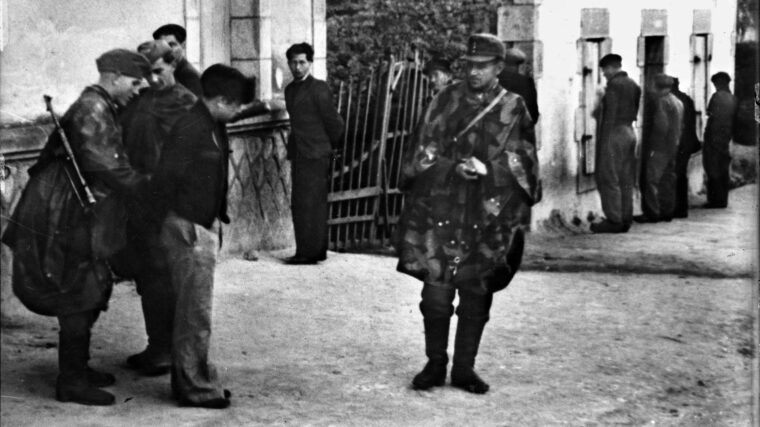
D-Day
Martyr Village: Massacre at Oradour-sur-Glane
By Robert MuellerUpon visiting Oradour-sur-Glane, one finds a quiet, rural French village where the populace carries on about its business much like in any commune in France. Read more
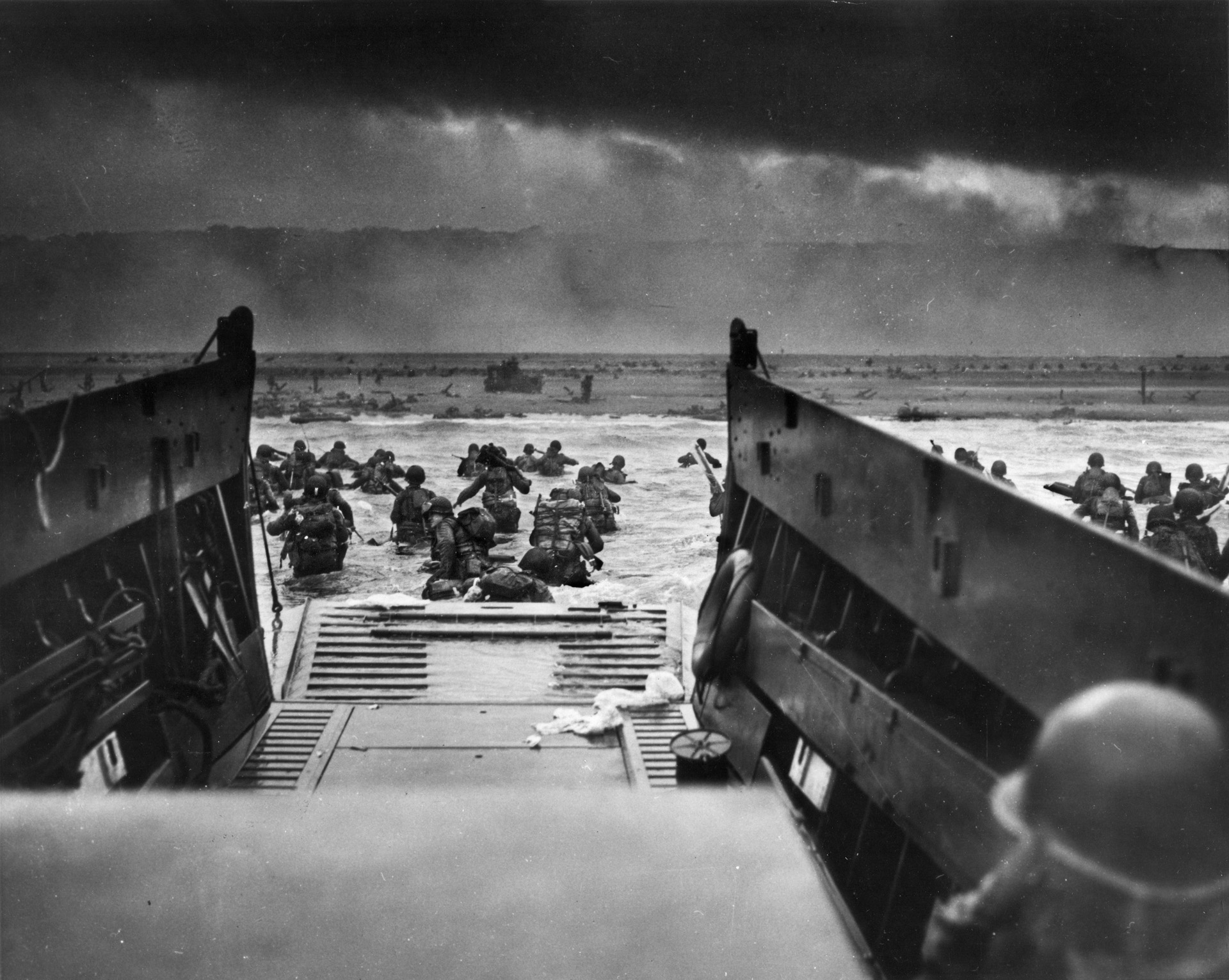
Code named Operation Overlord, the D-Day Invasion occurred on June 6, 1944, as elements of five Allied infantry and three Allied airborne divisions assaulted the Normandy coast of Nazi-occupied France during World War II. Under the overall command of General Dwight D. Eisenhower, the landings on Gold, Juno, Sword, Utah, and Omaha beaches succeeded in establishing a foothold on the continent. Following an arduous campaign in Normandy and savage fighting across the German frontier, troops of the Western Allies met the Soviet Red Army, advancing from the East, and Nazi Germany surrendered on May 7, 1945.

D-Day
Upon visiting Oradour-sur-Glane, one finds a quiet, rural French village where the populace carries on about its business much like in any commune in France. Read more
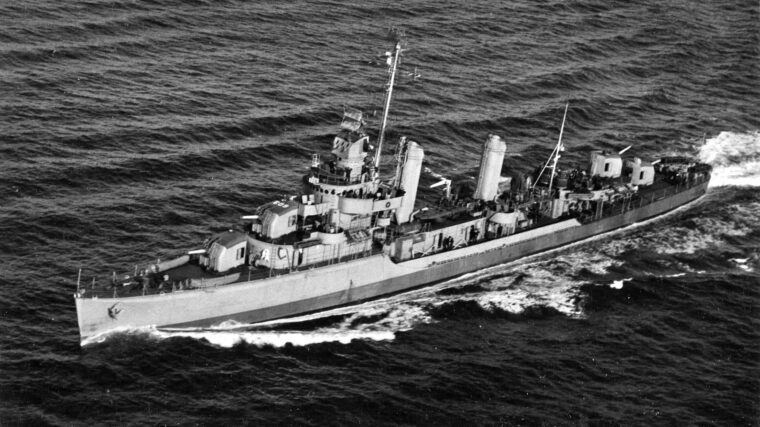
D-Day
Eighty miles off the coast of New Jersey and 280 feet below the surface of the Atlantic Ocean lies the forward section of a World War II destroyer, where it came to rest more than 60 years ago. Read more
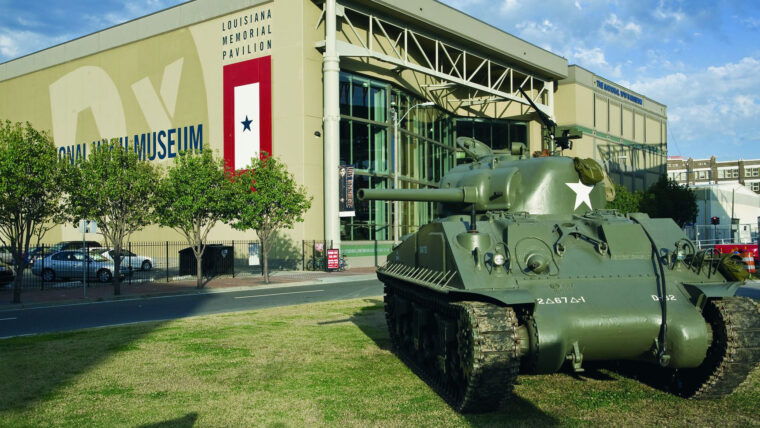
D-Day
Opened on June 6, 2000, on the 56th anniversary of the D-Day landings, the National D-Day Museum, as it was then known, initially focused on the amphibious invasion of Normandy. Read more
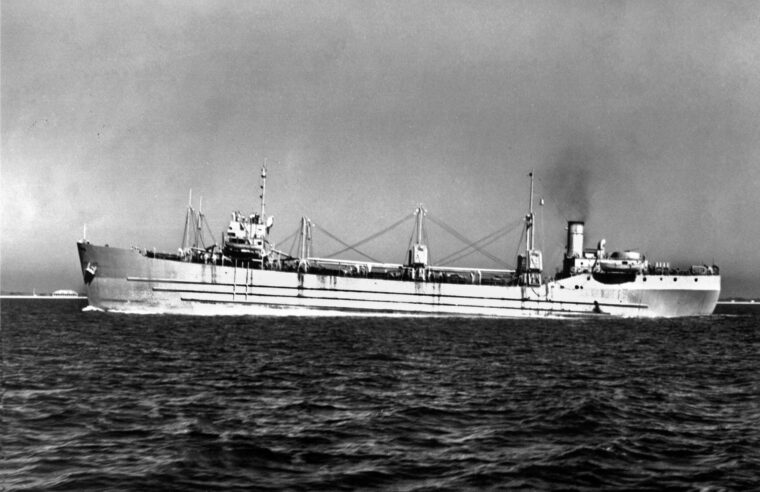
D-Day
It is a fact that war has sparked some amazing innovations. It has at the same time spawned incredible desperation. Read more
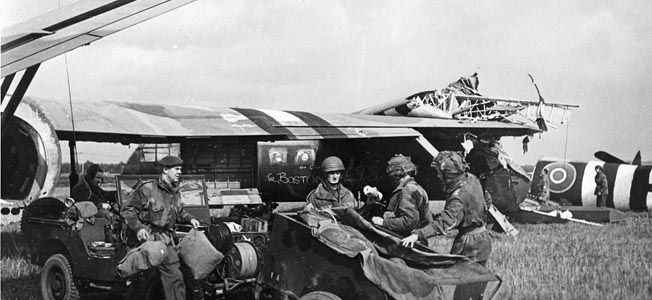
D-Day
On June 22, 1940, the British prime minister, the formidable Winston Churchill, directed that an airborne force of at least 5,000 men was to be formed. Read more
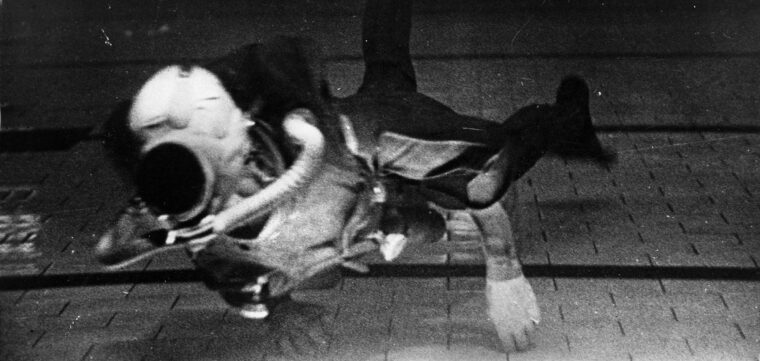
D-Day
British frogmen were the first ground fighters to engage the enemy on D-Day—and they did it without weapons. Read more
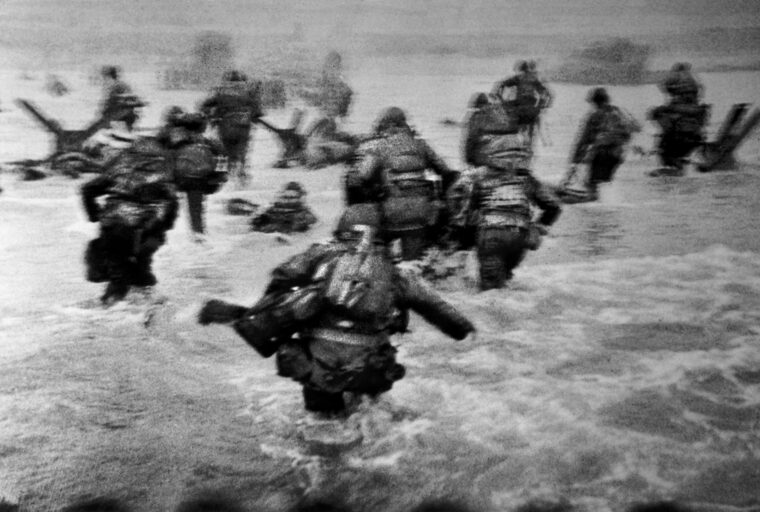
D-Day
When twin brothers Roy and Ray Stevens of Bedford, Virginia, joined Company A, First Battalion, 116th Infantry of the 29th Infantry Division in 1938, they could not know that their decision would completely destroy their dream of one day owning a farm together. Read more
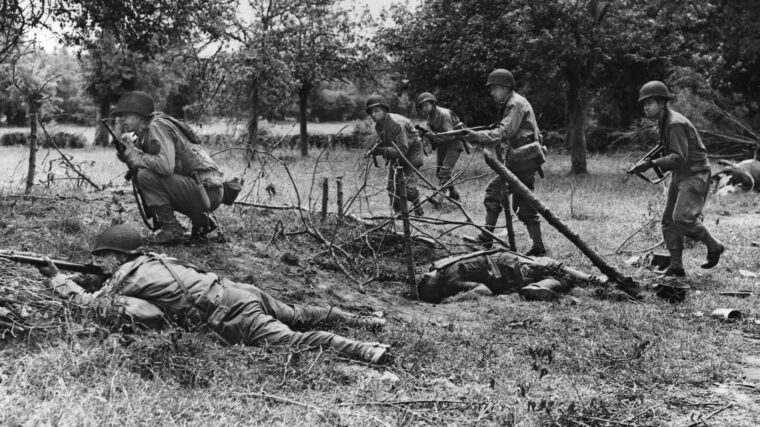
D-Day
When plans were drawn up for the Allied invasion of France in 1944, one important consideration was securing a deep-water port to allow reinforcements and supplies to be brought in directly from Great Britain and the United States. Read more
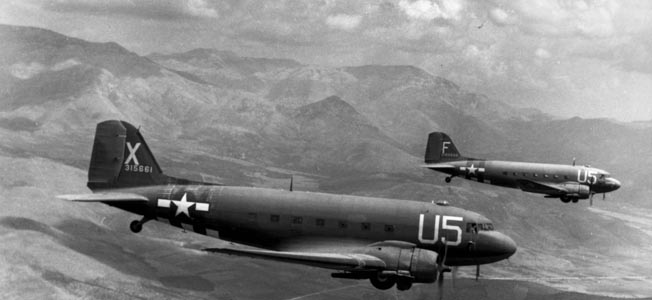
D-Day
At midnight, the jumpers of 2nd Battalion, 517th Parachute Regimental Combat Team, as well as the 596th Parachute Combat Engineer Company, still dripping from the paint-spray line, shuffled across Ombrone Airfield to the waiting C-47s of Serial 6 and climbed aboard. Read more
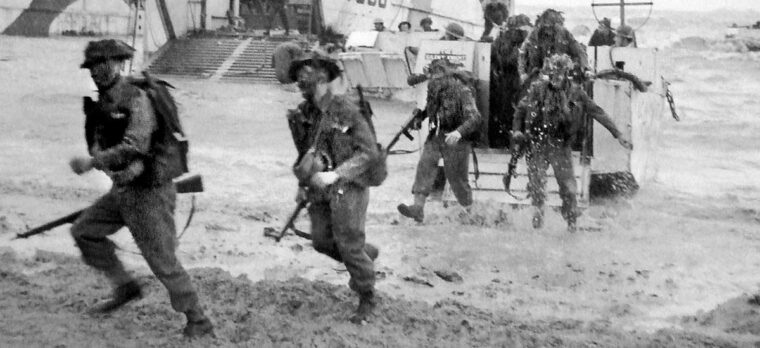
D-Day
A chill breeze cut through the early morning haze, and the storm-swollen sea was rough off the coast of northern France on Tuesday, June 6, 1944. Read more
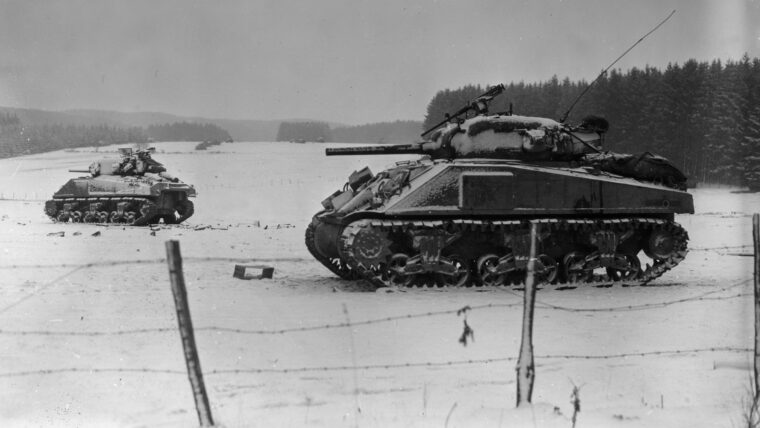
D-Day
After four months and a 600-mile advance from the beaches of Normandy into Brittany and then through eastern France, the spearhead of Lt. Read more
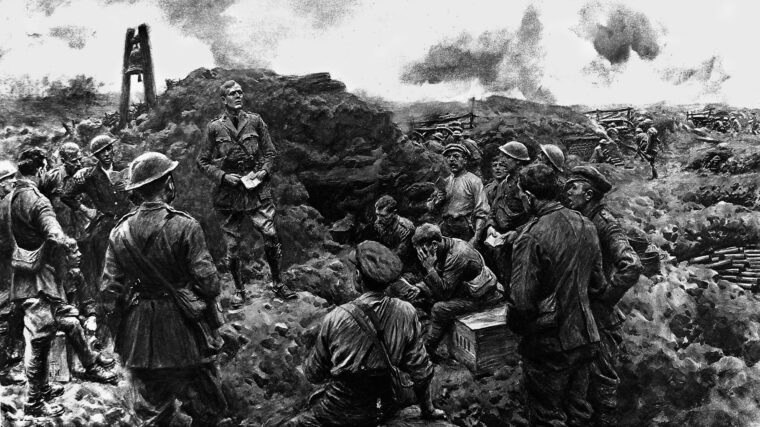
D-Day
They carried no weapons, only holy books and rudimentary vestments, a crucifix or a Star of David and sometimes a little Communion kit. Read more
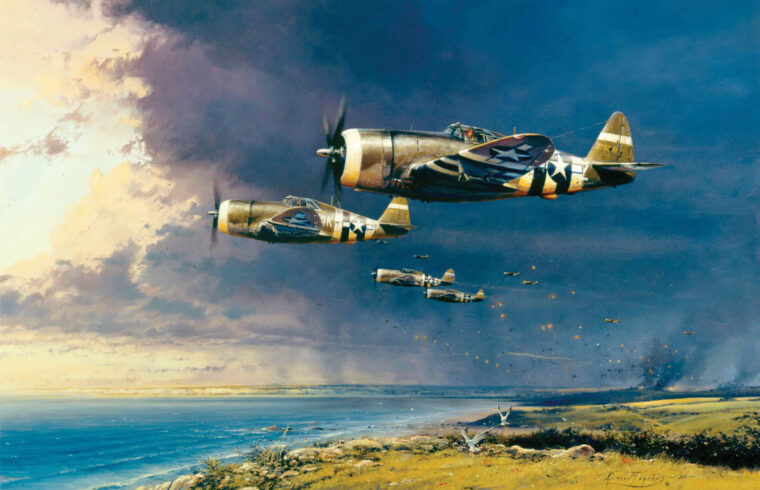
D-Day
As the landing craft carrying the invading Allied ground forces of Operation Overlord motored toward the Normandy beaches on June 6, 1944, they were protected and supported by the largest aerial armada the world has ever seen. Read more
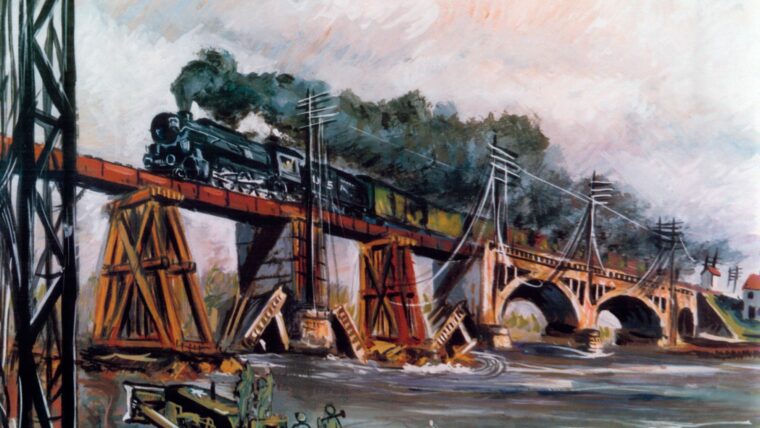
D-Day
Historian Christian Wolmar concludes that the two world wars could not have been fought to such devastation without military railways, in his book Engines of War. Read more
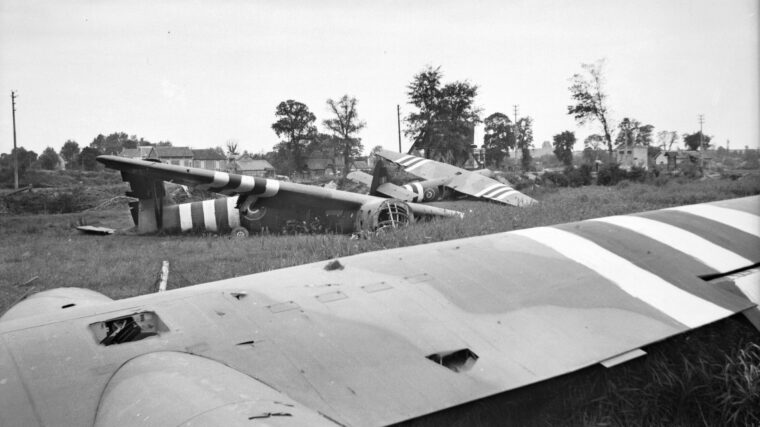
D-Day
On a darkened airfield at 2230 hours on June 5, 1944, a reinforced company of British gliderborne infantry, D Company of the Second Battalion, Oxford & Buckinghamshire Light Infantry (Ox & Bucks), boarded gliders, prepared to start the invasion of France. Read more
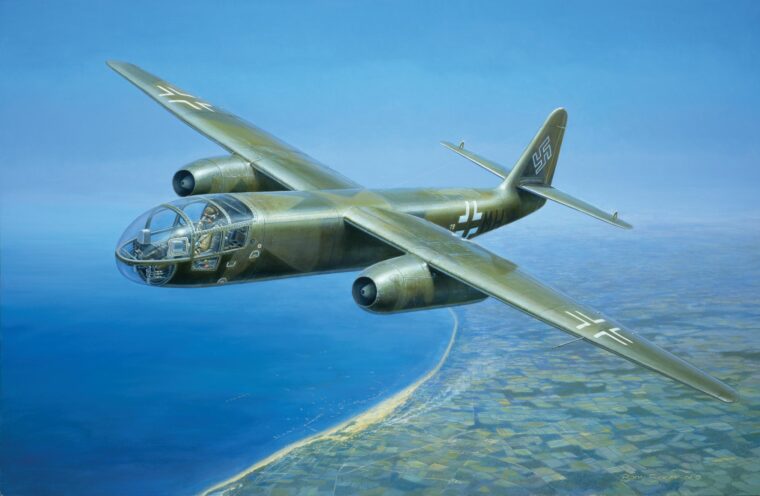
D-Day
When the Arado Ar-234 Blitz jet bomber first appeared in the skies of Europe, most Allied airmen did not know what it was. Read more
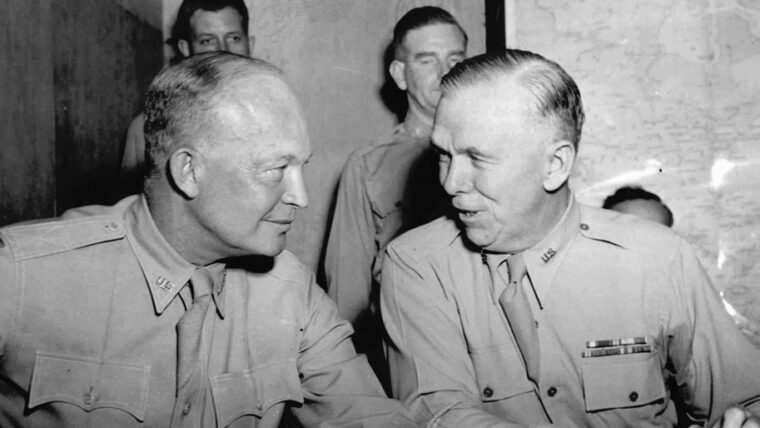
D-Day
President Franklin D. Roosevelt was disturbed in the autumn of 1938 by the Munich agreement, at which the rights of Czechoslovakia were signed away, and by reports of mounting air strength in Adolf Hitler’s Nazi Germany. Read more
D-Day
When Pearl Witherington Cornioley died quietly in 2008 at the age of 93 in a retirement home in the Loire Valley of France, some who thought they knew her well may have been surprised to learn that she had risked her life during World War II as an agent for the British Special Operations Executive (SOE). Read more
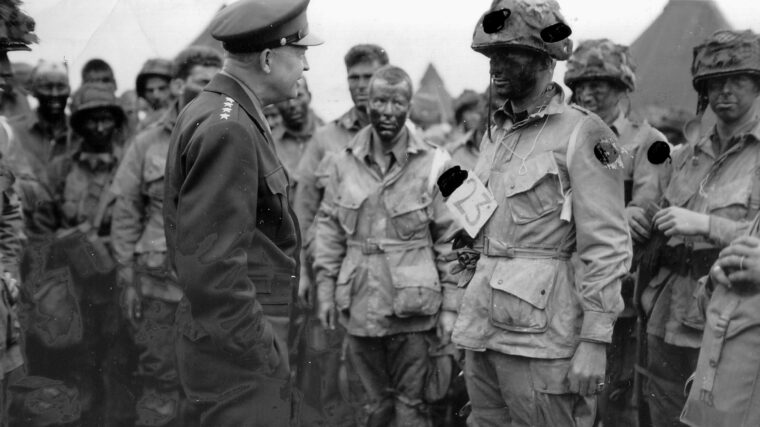
D-Day
In one of the most recognized photographs taken by U.S. Army cameramen during World War II, General Dwight D. Read more
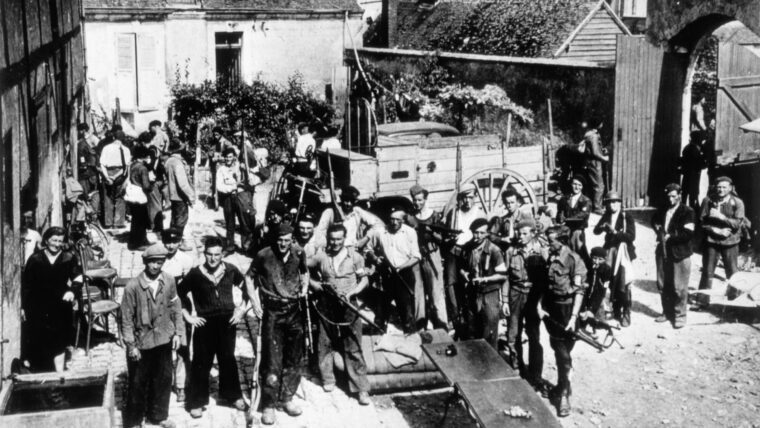
D-Day
The tempo of war planning intensified for the invasion of Europe during the early months of 1944. Finally, at daylight on June 6, 1944, Allied infantry stormed ashore along the German-held Normandy coast. Read more